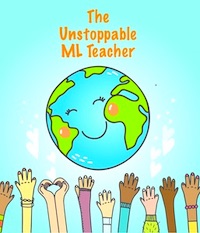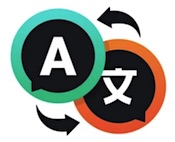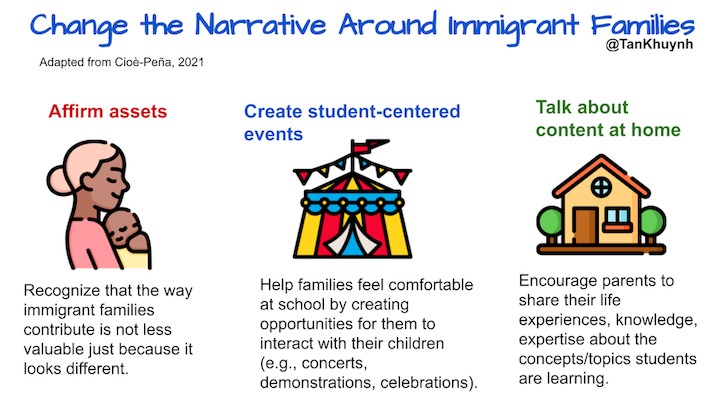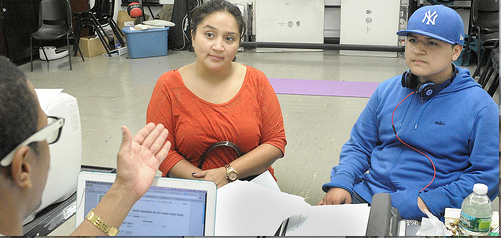Changing the Narrative about Immigrant Families
A MiddleWeb Blog

- left school in 4th grade to make money for the family by being a domestic servant for an affluent family
- single mother of four children
- owned a used clothing booth in a market in Vietnam
- a refugee who fled on a boat to find better life opportunities
- speaks Vietnamese fluently and likes to tell stories about her past
- speaks English socially but is illiterate in English writing
- does not attend school events without an interpreter
- lives in a subsided housing project
- highly active in the Vietnamese Buddhist community
- fiercely demanded Vietnamese be used at home
- maintained Vietnamese cultural practices
- works two minimum wage jobs
- held high expectations of her children at school, and college was a non-negotiable.
The “broken” narrative
How would some schools perceive my mom? Most would fixate on her conditions as deficits and label her as an uninvolved mother who has limited abilities to contribute to my education. Yet immigrants like my mother are highly involved and invested in their children’s lives in the ways that are available to them.
Families form the foundation of learning, well-being, and security for children. Yet we sometimes hear a limited, narrow narrative around immigrant families.
You might have heard such detrimental statements to describe immigrant families as:
- they don’t value education
- the parents aren’t involved
- they aren’t able to help their children with schoolwork
- they don’t speak English at home
- they don’t want to assimilate into American culture
- they don’t attend school functions
- they don’t respond to school communications
These limiting statements are not only untrue, they prevent teachers and schools from seeing the assets immigrant families offer to enrich their children’s education. With this deficit narrative, no wonder the home vs. school clash exists. Schools perceive immigrant families as unable or unwilling to engage while families feel undervalued, the source of the “problem,” and unwelcome at schools.
After my podcast conversation with Dr. María Cioè-Peña based on her new book (M)othering Labeled Children: Bilingualism and Disability in the Lives of Latinx Mothers (2021), I wanted to share ways we can change the broken narrative around multilingual mothers from marginalized cultures.
An assets-affirming narrative
Many of us view multilinguals as whole, capable, and full of rich experiences. We teach from this vantage point, and it is a positive experience for all. We need to see immigrant families with the same affirming lens through which we see our multilingual students.

Photo by Monica Melton on Unsplash
The main way to see the assets that immigrant families contribute is by expanding our definition of participation. We have to understand that immigrant families actively participate in their children’s lives, and participation might look different from how educators engage with their children.
There are numerous ways that parents can contribute to their children’s learning experiences. I’ll share some examples of ways that my mother did so with me:
Literacy (reading): read Vietnamese letters from relatives and poems associated with the Lunar New Year (demonstrating stamina, predicting, fluency, inferencing, plot, reading genre)
Literacy (writing): co-wrote letters to relatives (demonstrating author’s purpose, punctuation, grammar, organization)
Science (biology): talked about the different plants and animals found in Vietnam
Social studies (geography): talked about the geography of the Mekong Delta
History: talked about life in the refugee camp
Business: talked about her business strategies and negotiation techniques when selling clothes
From this perspective, my mom did richly contribute to my learning from her context and life experiences. No, she never sat next to me to help me with my homework. How could she? Yet my mom still contributed in the ways available to her and from her lived experiences, which could not have been more different than those of my teachers and principals.
Different doesn’t mean less valuable.
Suggestions
In changing the limiting narrative around immigrant families, we must adopt a more inclusive, affirming approach to celebrating the family engagement that already exists.
Give grace
Be patient and not dismissive when families cannot attend school meetings. It might require taking unpaid leave from work, paying for child care, asking community members to drive them to school, etc.

Lastly, offer engagement through asynchronous mobile texting that translates messages into different languages or voice messages. This helps address language needs and is more flexible than appointment-based meetings.
Create family-centered events
Organize events where families can participate and engage with their children at schools so that families feel less threatened by the formality of American schools. Some examples can be cultural cooking lessons, cultural games, cultural movie night, etc.
The goal is for immigrant families to contribute from what they know and to participate in schools in a non-threatening way. This will possibly lead to more family and school partnerships. This more inclusive approach is strikingly different from the medical model of family-school meetings based on diagnostics, spreadsheets, graphs, and recommendations for interventions.
Encourage content conversations at home
Allow the home to be an extension of school. We can do this by sharing the content that students are learning. If families happen to have a connection to that topic, they can:
- tell stories from related life experiences, if they have any
- describe how that topic is expressed in their culture
The goal is to encourage conversation between children and their families about school topics. For example, when I was learning about the American Civil War in tenth grade, my teacher could have let families know that we were learning about the concept of civil war. If families happened to have relevant life experiences or knowledge about civil wars in general, they could have shared these experiences so their children would have another context to understand civil wars.
My mother knows nothing about the U.S. Civil War, but she holds primary source knowledge about the Vietnamese Civil War. It would have been great to learn about a civil war in another context to expand my understanding. Learning about my country would be an added bonus. In this way, my mom could contribute to my learning from her fount of knowledge.
Check out more examples of ways students can incorporate interviews with their relatives by discussing gender studies, mathematics, or even the recent pandemic on these Teachers Pay Teachers examples.
Conclusion
Many of us are working hard to get our schools to abandon the deficit narrative around multilinguals. This also means letting go of the limited perspective of their families as well. We need to see with more inclusive eyes and celebrate the ways families are already contributing from what they’ve experienced in the ways they know how.
Immigrant families’ life experiences might be different than those of native students and their teachers, but that does not mean they’re less valuable. In fact, the differences are where the gems are buried.
Reference
Cioè-Peña, M. (2021). (M)othering Labeled Children: Bilingualism and Disability in the Lives of Latinx Mothers. Multilingual Matters.



































